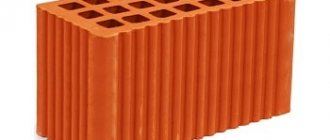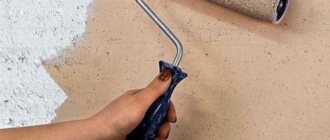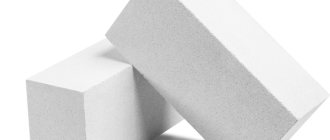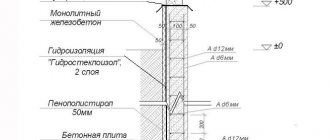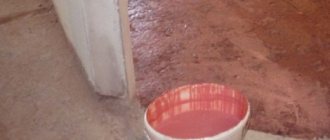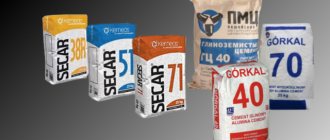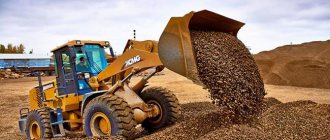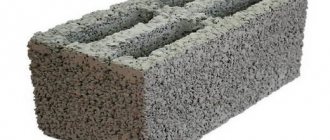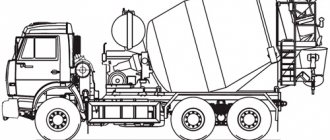Modern construction or renovation work rarely takes place without the participation of designers. Despite the fact that they are spoiled by polymer building materials, absolutely everyone likes to work with ordinary white brick. This material is like a white canvas for creation: solid and original.
The whole essence of brick texture for interior design was revealed only in the last century. Brick became popular not because the owners did not have money for other materials; rather, it was the other way around; it seemed to emphasize status. White brick symbolizes solidity and reliability.
Practical advice
Knowledge of the nuances and experience of professionals will help you avoid mistakes and improve quality:
- Be sure to sift the sand. There should be no large fractions in the grout mixture.
- A fresh batch should sit. Let the solution sit for at least 20 minutes.
- When filling the seam, try not to get the solution on the surface of the masonry.
- When laying on the front side, leave gaps to decorate the seam.
- A concave seam can be made by filling the vertical and horizontal at the same time.
- It is better to remove the remaining solution immediately.
- Correct any unevenness/mistakes immediately while the solution is damp; this will not be possible after it has hardened.
- It is better to work on a cloudy, dry day.
- You can make the jointing yourself from an old knife or any metal object.
Start filling the seams from the vertical gaps
Advantages and disadvantages
- Long service life. Brick is a material with a high level of strength. It is resistant to the influence of natural factors and the loads placed on it. The material does not corrode, rot, is resistant to temperature changes and high humidity, which means it guarantees a long service life.
- Environmental safety, since the material is natural, made from natural raw materials.
- Fire safety. Brick is not combustible, spontaneous combustion is impossible, and this is a positive point when choosing a material.
- Soundproofing. Many people prefer silence, to move away from the bustle of the city and be alone with themselves and their thoughts. It is in a brick house that you can afford this, because thick and massive walls absorb most of the noise.
- Easy to care for. Brick is easy to clean, its maintenance will be as simple and convenient as possible.
- Great design potential. With the help of bricks you can make attractive houses for every taste. With the help of a brick you can open up new facets and possibilities.
Technology for jointing brickwork: step-by-step instructions
February 16, 2019
The most common building material is brick; it has high thermal insulation, strong and reliable, durable, and in addition, working with brick is accessible to every man. Bricklaying is not difficult to learn; all you need is a little practice. However, it happens that brick also acts as a finishing material. In this case, it is important to correctly joint the brickwork so that the aesthetic appearance of the wall is not affected.
Brown brick house
The pictures show the original colorful and undoubtedly memorable facade of a frame house made of brown brick of various shades from one segment of the color palette. An interesting version of brickwork looks chic together with the snow-white trim of window and door openings, pediment and eaves trim. The dark roofing and gutters further highlight the purity of the white decor.
What is seaming
Jointing brickwork is, in the literal sense of the word, highlighting the seams, bringing them to an aesthetic and decorated appearance. Unformed seams look rough and unsightly; the appearance of the facade of such a building will resemble an outbuilding. And if we are talking about a brick wall as an indoor decor, then even in the most minimalist or natural interior style, it is simply impossible to leave the seams untreated; this decision will become an indicator of the bad taste of the apartment owner. Depending on the appearance, there are several types of jointing, rectangular and triangular, convex and concave. The choice of jointing method depends only on the preferences of the owner of the house, but it is important to remember that concave types of jointing are not recommended for use on the outside of the building for cladding; during rainfall, water will accumulate there, which has a destructive effect on the brickwork.
For what purposes was the colored solution invented?
In addition to the unpleasant effects of lime or salt efflorescence on a red or dark background, the color and shade of the bond joint can radically change the shade, overall impression and perception of colored masonry. Craftsmen involved in decorative masonry know firsthand about the insidious effect of darkening the original color of a wall. The rich fiery red or beige color of the brick acquired a grayish tint upon completion of the masonry.
The reason is the gray or dark gray color of the brickwork joint. Approximately 15% of the surface of a brick wall is occupied by the joint surface, gray and featureless. The bright shade of the finished building can be darkened by even 3% of street dust that has settled on the brick, and 15% of a gray seam can completely ruin the appearance of the building.
To prevent loss of shades, experienced craftsmen take some measures in advance:
- The interbrick joint is grouted with grout mixtures of various colors and compositions;
- A brick wall is painted with special colored compounds that reveal the color and, often, give the brick texture water-repellent properties that prevent efflorescence and discoloration;
- They use a colored mortar for laying bricks; after jointing and contouring the seam, the required color and shade of the entire brick building is achieved.
Pros and cons of unstitching
The advantages of unstitching
relate:
- Ease of implementation of the method.
Joining is no more difficult than simply applying grout, but the appearance of brickwork with jointing looks aesthetically pleasing and impressive. - Saving material.
When grouting, you apply grout in an orderly manner; the excess is removed during the work and applied elsewhere, thereby saving the material used. - Finished look.
The appearance of a brick wall leaves the impression of well-groomed and complete.
But the method also has disadvantages, about the disadvantages of seaming
It is also important to know before starting work.
- Joining seams does not tolerate mistakes.
Even a small mistake, not corrected in time, will lead to damage to the appearance of the masonry, because it will be noticeable to the naked eye. - Opening the seams reduces the thermal insulation qualities.
To eliminate this drawback, experts recommend using jointing only on one side of the wall (external or internal) and using an additional layer of heat-insulating material.
White brick house
Plain white brick houses with a brown roof are a rarity today. This house in the photographs looks original due to the unusual soft and delicate pinkish shade of the white facing brick. But it is precisely this sophistication that sets the building apart from others. The harmony of the exterior is complemented by a suitable soft brown shade of shingles and dark wooden decorative elements, enclosing structures and window and door products.
Jointing technology
There are several types of jointing technologies; the choice of a specific method depends on the stage of construction at which jointing is required. In any case, first prepare your seam cutting tools:
- several types of brushes (with soft and hard bristles, as well as with wire bristles);
- a long wooden strip or metal rule (length not less than 1 m);
- special spatula for jointing;
- if grouting is not carried out during the construction process, then to work with long-hardened grout you will need a hammer drill, a container for mixing the mortar, a mixer, a wooden blade and a trowel. In addition, prepare the ingredients for the mortar: sand, lime and cement.
Let's look at step-by-step instructions for unstitching.
- Jointing during construction.
The most preferred option because it is simple and fast. During the brick laying process, remove excess mortar with a trowel, and then use a special jointing tool to refine the vertical and horizontal seams. Remove excess solution with a wire bristle brush. - Undoing old seams.
If the idea of improvement came to mind after completion of construction, use a hammer drill to remove excess mortar. Use a brush to sweep away any debris that has formed, and use a vacuum cleaner to remove dust and small remaining solution residues. Apply a primer or just water to the seams, followed by a layer of mortar prepared in advance. Next, using the technology you already know, create the necessary grooves on the seams.
- Suture reconstruction.
If the previous jointing has lost its presentable appearance, has crumbled or changed color, carry out a new jointing, guided by the steps described above.
Highlighting the seams of a brick wall is a simple and accessible way to give the wall a new look, make the finish impressive and effective. If your own resources are not enough to complete the work, call a specialist who will quickly and efficiently improve the facade or interior design of the room.
Yellow brick house
The house is made of warm yellow brick with brown trim and blends very harmoniously into the surrounding green landscape. The beautiful brown color of the soft bitumen shingles further enhances the soft warmth of the façade.
Another house made of yellow variegated brick attracts attention not only with its brightness, but also with an interesting architectural technique - highlighting the corners of the building with bricks of a different color. The combination of the color of the roof and the color of the facade also attracts attention, because, unlike other houses, there is a feeling that they are strictly collected in one tone.
SNIP requirements for seam thickness
The thickness of joints in brickwork is on average 10 mm. The final value is selected depending on the design and type of products used. With large deviations towards reduction, it is not possible to compensate for the unevenness of the products, and the calculated number of blocks may not be enough. If you increase the mentioned value, the walls will lose strength for the reasons discussed above.
The mentioned parameters are used when constructing load-bearing walls. For brickwork, the thickness of horizontal joints is maintained at 12 mm. Vertical seams are usually 10 mm. The limit in longitudinal rows varies from 10 to 15. In transverse rows - from 8 to 12. If the project specifies certain values, then deviation from them is unacceptable, therefore, control and verification must be carried out during the work.
When the material itself is a sign
Delivery of any significant quantity always occurs in pallets, where the unit of measurement is “conventional thousand”
Projects of a red brick house are immediately evident if you open any advertising brochure with proposals for private construction from any construction company. This widespread use is due to the properties of this material.
Red brick has the following properties, which force builders to pay primary attention to it:
- Firstly. high strength due to the extremely fine consistency of the starting material – clay. Suffice it to say that in a dry state it is a dusty mass.
- Secondly. good frost resistance, measured by cold-heat cycles. For the presented brick, even in the worst case, this indicator is never lower than 25, and some samples have 75 cycles. There is even an evaluative practice for determining the durability of a building - the number of frost resistance cycles is multiplied by a factor of 2.5 to 3, depending on the climatic conditions of the construction site.
Building brick, no matter what material it is made from, has strict standard dimensions determined by GOST
- Third. fire resistance, because red brick gets its final appearance as a result of firing. Hence the widespread recommendation to use it in the construction of stoves.
- Fourthly. the color itself, which eliminates the need for any plaster. Hence the “red” houses, so noticeable. And most importantly - significant savings in money and time.
Treatment of seams is a mandatory procedure for any brickwork
Red, like any other brick, has another important positive property - a stable range of market offers in size.
Dimensions and weight
The design of a red brick house is necessarily “tied” to the main size used:
- Single is the most common size, recognized as the most optimal for almost any type of brickwork. In millimeters this is (length x width x height) - 250 x 120 x 65;
- One and a half - the actual birth of this and subsequent sizes is the desire to saturate the market with new offers and opportunities. Geometrically, such a brick is 250 x 120 x 88;
The masonry itself does not differ in any particular features - still the same mortar, trowel and the desire to make everything as even as possible
- Double - this size is already due to the desire to speed up the entire process of constructing structures; its dimensions are: 250 x 120 x 103. Note that double is almost never found in full body.
Actually, the disadvantages of red brick are continuations of its advantages:
- Strength, and hence increased weight - if the brick is solid, then its weight will be from 3.5 to 4 kilograms. As a result, red brick, when used on high-rise structures of 2-3 storey buildings, requires a more solid foundation.
The good thing about red brick is that, if chosen correctly, it frees you from the need to plaster the walls, you just need to choose whole ones, which the work in the photo cannot boast of.
Helpful advice! The red brick market is quite large, which is certainly good, at least from the point of view of choice and price competition. But this competition also has its drawback. Unfortunately, a lot of low-quality, often burnt-out bricks are sold.
This can be identified by cracks on the surface and melted corners. There is another aspect of choice. Brick is perhaps one of the most environmentally friendly of all building materials.
Red, consisting mainly of clay, has virtually no additives. However, GOST 530-95 strictly defines the so-called effective activity of natural radionuclides in red brick. This parameter should not exceed 370 Bq/kg. Therefore, when purchasing a large batch for building a house, you may not require a certificate, but it won’t hurt to have a dosimeter on hand.
- On the other hand, the calculation of the foundation is always carried out with a fairly significant margin. Therefore, you should not be particularly concerned about the strength of structures when using this type of brick.
There are quite a lot of DIY technologies. There are also those who, for the purpose of leveling, suggest using rigid gaskets around the perimeter, which are subsequently removed
Helpful advice! There is such a thing in brickwork as “internal stress”. It is internal tension that is the precursor to problems with the foundation. This type of stress is a consequence of unsuccessful or inept masonry, when individual sections of the same brick inside the masonry experience different stresses. This is usually due to incorrectly laid lumps of mortar and too large voids in the mortar layers.
We invite you to familiarize yourself with Fittonia red at home care
Of course, when building your house, your choice may include double sand-lime brick M 150 and red, and even fireclay. But pay special attention to the color. The instructions for using this brick are no different from the instructions for using any other.
The price will also suit you quite well. Red brick house designs are always notable for their beauty, but for their elegance. And what else is needed to feel, at least for a moment, happy in a new home.
If you choose a high-quality brick and do everything carefully, you won’t have to regret choosing red
In the video presented in this article you will find additional information on this topic.
Expert advice
The thickness of joints in brickwork is influenced by several factors. This is the professionalism of the masons, the chosen technology and the hardness of the mortar, as well as the climatic conditions during the work and subsequent operation. As for the chosen technology of mortar rigidity, during laying the bricks can be laid in a clamp, which requires high-strength cement-sand mixtures. The thickness of the seam is the maximum possible - 12 mm.
If plastic and liquid compositions are used, then the bricks are laid end to end and trimmed, that is, as closely as possible. The step between adjacent products should not be more than 10 mm. The thickness of the joints in the brickwork is made smaller if the work is carried out in winter. Antifreeze substances are added to the mixtures, and the seams are heated after laying the products. This also applies to walls that are built in northern latitudes.
The masonry is made as monolithic as possible to reduce the influence of low temperatures. Thickness can be affected by shapes and geometric dimensional accuracy. If we compare with aerated concrete blocks, which are laid with construction adhesive (the joint thickness is 3 cm), then it is more difficult to install the brick, because deviations from the standard and declared values have to be corrected. Elements can be uneven and cheap, which forces specialists to change the thickness of the seams by 12 mm in order to fit the design data.
A few words about installation
Note that facing brick finishing is used for any construction technology of load-bearing and enclosing structures of a house, be it a house built from aerated concrete, from porous stone or using frame technology. Very often, owners build an energy-efficient frame house and line it with brick. And no one will ever know from the façade what technology was used to build the house. And homeowners enjoy all the cost and energy savings benefits available with framing technology.
Among the assortment of facing brick surfaces, we recommend smooth and rough, since they are comfortable and convenient to work with, and the laying is as accurate as possible.
Brick finishing is done from bottom to top. The evenness of the installation is checked using a level. An air gap of 30-40 mm is left between the facing and load-bearing walls. The facing masonry is connected to the load-bearing frame using anchors made of stainless material, the length of which is selected taking into account the thickness of the load-bearing walls, the ventilation gap and the thickness of the insulation.
Whatever you choose, in the Bronze Horseman Insurance Company you will get a good-quality home, the appearance of which will delight its owners for many decades.
What else is important to know
The last factor when choosing the thickness of joints in brickwork is usually decisive. Professionals can make correct adjustments to products with irregular shapes and sizes, and with large deviations, the final strength of the structure can be reduced by up to 25%. To resolve the issue, reinforcement helps little, and the material should be well checked at the purchase stage.
In addition to the thickness of the mortar, the reliability of the masonry is influenced by the strength grade. It is important to take into account frost resistance, the proportion of voids along with geometric accuracy. This thickness of the horizontal seam of brickwork is true for all small-piece elements, including facing and silicate ones.
It is possible to slightly increase the thickness when working with double varieties, but when constructing load-bearing walls and carrying out facing masonry, the layer in relation to the vertical seam must be kept within 10 mm; as for longitudinal, this value is 12 mm. As an exception, fireboxes for high-temperature heating devices and similar structures made of refractory products are used. About 5 mm of solution should be left between them. Rectangular tiles should be included in a separate group. It is laid in compliance with the recommended jointing norm. It depends on the type of edge of the product and texture, as well as requirements for moisture protection.
Red brick house
A house made of bright red brick is a classic facade decoration. He always looks restrained, stern and very dignified. If you look closely, the photographs show a pleasant transition from dark red to brick, which makes the facade slightly colorful, but memorable. The originality of this red brick house with a brown roof is given by the balance of the red brickwork and the soothing white color of the plaster. But the entire image of the building is assembled by the architect’s original solution - this is a dark gray base, roof, gutters and platbands.
Seam thickness between facing bricks
The thickness of the joint in facing brickwork is 12 mm. In order for the wall to breathe better, every fourth vertical seam must be filled with mortar. On sale you can find special cross-spacers used for making brickwork. With their help, you can form the same thickness of seams.
Spacers are installed between adjacent bricks and allow you to adjust the distance between products. Before sewing the external seams, the gaskets should be removed. Thus, the thickness of the joint in the brickwork of facing bricks is the same as in the case of ordinary bricks.
Brown brick house with white joints
Below is a brown brick house that truly decorates it and makes it look restrained and graceful in a European way. Many people like this building. The uniqueness of the appearance is born from the subtle transition of several shades of brown inside the brickwork and the interesting color scheme of the soft tiles. The brown brick cladding is complemented by white “seams”, white wooden decorative elements, platbands and window frames.
Main types of seams
Depending on the subsequent finishing and installation method, there are three types of seams:
If the wall is to be plastered, then for better connection with the finishing layer, the seams on the side of the front surface should not be filled with mortar to a depth of 15 mm. This kind of masonry is called wasteland. If the mortar reaches the front surface, then the laying is done undercut. Excess mixture is squeezed out onto the face with a brick and trimmed with a trowel. They can be smoothed by jointing.
Depending on the type of jointing, convex and concave seams can be distinguished. This method is used when laying using a single-row dressing system. But to make the work easier, a certain algorithm should be used. After laying the interlocking bricks, the spoon bricks are laid, then the internal versts and backfill of the wall go. If you follow this sequence, then you will not have to switch from external to internal miles as often as with masonry, which involves installing one row, and then another.
Innovations in the use of colored masonry mortars
The desire to give the walls of a house a refined and slightly pretentious look pushes craftsmen to come up with unusual solutions in the use of colored solutions. A small addition of finely ground glass powder with a fluorescent component makes the grout mesh glow against the background of dark brick for several hours after sunset.
Another unusual application is to grout colored mortar joints with a mixture that changes color depending on the ambient temperature. Thus, as the wall made of facing bricks warms up or cools down, it can change its shade and texture pattern.
Such things can be called eccentricity, but practice shows that there are plenty of people who like to decorate their homes in the most unusual way, which means there will always be a couple of fresh proposals to meet the demand.
Brick laying methods
Now you know the average thickness of horizontal joints in brickwork. However, for a good result, it is important to also inquire about the methods of carrying out the work. The choice of one method or another is subject to several factors, including:
- season;
- plasticity of the solution;
- appearance of the front surface.
The press-on method is used for both spoon and butt stitches. This technology is applicable in conjunction with rigid solutions with full filling. About 10 mm should be maintained from the edge of the mortar bed of the front wall. There is 1 more method - touching. Another name for it is in the wasteland. In this case, the facial seams are not completely filled. Plastic solutions are applicable here. With this method, the filling will be incomplete, and the step from the vertical plane will be 30 mm.
You can also use the butting method with pruning. In this case, the mortar is spread, as for the clamping methods, and the masonry work is carried out using the adjoining technology. The mortar must be rigid, and trimming is done by grasping the squeezed out mortar with a trowel. Excess mixture is poured onto the next section. This type of masonry is more economical in terms of consumption of associated materials.
For backfilling, the half-fill method is used. The outer rows are laid first, and the work will have to be done with both hands. At the same time, it will be necessary to take two bricks and bring them flat at a distance of 8 cm from the previously laid product.
Selection principles
The key task of the masonry mortar is to perform a connecting function between all elements of the structure being built, and the choice of mixture should be based on the mandatory consideration of the following principles:
- the composition of the working solution for performing work in summer and winter has certain differences;
- when choosing a mixture, it is necessary to take into account the location of the object, since underground and above-ground work is carried out using solutions of different compositions;
- laying with clinker bricks is carried out using a working solution of a special composition;
- When constructing stove or fireplace structures, the use of cement mortars must be excluded.
The type of binder component included in the standard solution allows you to determine the type of hardening, which can be either hydraulic or air. If there is one binder component, then we have a simple mixture represented by lime and cement compositions. The presence of several binding elements is a sign of a complex masonry mixture, which can have high ductility and successfully resist cracking under the influence of negative external factors.
When ready-made masonry mixture for bricks is needed
Mortars for brickwork
You now know what thickness of the seam in the brickwork should be. But to carry out the work yourself, it is important to also inquire about the types of solutions. Among others, lime mixtures should be highlighted. If a more plastic composition is required for installing interior partitions or installing fences, this mixture is ideal. The base will be sand, as well as quicklime ground. The components are mixed until a homogeneous mass is obtained, to which water is then added. Such a solution should not have impurities or lumps. For one part of lime, 2 to 5 parts of medium sand will be sufficient.
The most common is cement mortar, which is prepared from the ingredient of the same name and sand. The proportions can be very different and depend on the brand of cement. So, for one part of cement you can add from 3 to 6 parts of sand. First, the dry mixture is mixed, to which water is gradually added. Everything is mixed until a homogeneous thick mass. The solution may turn out to be inactive, too hard or too strong.
The solution can be complex; in this case, it consists of lime, cement and clay. Cement and other components can be added to lime. Clay is added to make the composition more plastic. It does not fall apart during operation and is easy to install. Having become familiar with the thickness of the joint in the brickwork for a stove or the walls of a residential building, you must decide which mixture will be used for such work.
Kinds
The facing surface with tubercles can be achieved by applying sealing plaster. This technique is easy to implement. The brick should be covered with a ball of mineral chips. After this, it is sent back to the kiln for firing.
To achieve a perfectly smooth texture, which will visually resemble marble products, the facing material is subjected to engobing by applying a layer of ceramic coating to the material.
No seams
During construction, smooth facing bricks are often used, which are treated with a special fire-resistant glaze. After firing in the kiln, the texture of the brick becomes transparent.
Visually, this cladding material looks very durable.
No seams
Finished walls must undergo another treatment. It is carried out mechanically (by partially chipping the surface). As a result, the texture of the finished sample becomes as identical as possible to natural stone. It does not lose its strength during processing .
Old masonry
Brick that has already been used cannot become the basis for future decorative structures. This is because it is a regular building material made of clay , which is absolutely identical to the classic brown-red block, except for the color.
The required shade can be achieved by adding a little paint to the clay. The initial texture of the brick is rough and porous.
The material in question is used regardless of the type of construction. It becomes the basis for the construction of multi-apartment buildings and brick fences.
It is used for cladding the facades of city buildings. In recent years, the fashion for antiquity has returned in the world of interior design. Among the popular options, the clear leader is considered to be old masonry , which has elements of wear and fading.
Old masonry
Chips and chips are also relevant. Even if you start building an object or wall from old brick, it will still not be easy to replicate the old-fashioned effect. This material is not the most ideal for construction , because its strength is critically low.
Semi-dry floor screed is used to speed up the process of forming flooring during the construction of houses and buildings. Here are the advantages and disadvantages of this type of screed.
Wall decoration is rightfully the main part of the cozy and beautiful interior of your room. Here's all about stone-look wall panels.
Using plaster you can not only increase the thickness of the walls, but also make them strong and reliable. By clicking on the link you will find out how long it takes for plaster to dry on walls.
This can easily be explained by the fact that moisture eventually begins to affect any antique surface. Even a brick can crack after a few decades. Moss and mold appear on it. Therefore, if an ancient building is in a disrepair, it must be repaired or demolished.
It is irrational to use old brick for decorating a living space, because it has a specific smell.
However, the designers found several alternative options. So the dilapidated texture is replaced with artificially aged material.
The basis is taken from classic brick blocks made of clay, which undergo several industrial treatments using special means. Options for creating the old structure are often used at the clay mixing stage. This is how the most durable products are created, where there is an imitation of chips and deformations.
A heterogeneous aged brick texture can be achieved by adding flour, coal or soot to the clay mixture. Such material is difficult to replace at the decorating stage, when creating effective internal partitions, bases for stoves, under a fireplace or panels for cladding a living space.
Facing the room
Such popularity of the material has contributed to the emergence of a diverse palette of shades of bricks, which are distinguished by uncharacteristic textural features.
The designer’s creative idea, in combination with a white brick wall, will allow you to create beautiful architectural compositions that will amaze with their amazing simplicity and decor.
White seam
The texture of brown brick with white seam is quite diverse. But getting that same white seam can sometimes be very difficult.
Brown brick with white seam
To do this, you need to remember these rules:
- lime is added exclusively to the masonry mortar. At the same time, you should not be embarrassed that the resulting mixture will not be white, but rather with a reddish tint. Some experts argue that to achieve a wall with white seams, it is advisable to avoid its contact with heavy rain;
- it can cause the formation of streaks and lime deposits;
- many specialists often use special color tints or solvents. But often the result does not live up to expectations. Such dyes cannot one hundred percent guarantee a white tint. Even if even a slight non-compliance with technology or proportions will lead to a change in color;
- masonry mortar can be prepared from special white cement and material obtained by crushing and sieving milky white quartz. Brick laying should be carried out as responsibly as possible;
- Minimal contamination is strictly excluded; it is important to remove excess building material in a timely manner.
But it is best to purchase a snow-white dry mixture, which is used exclusively for rubbing joints.
Decorative
In construction, special attention is paid to decorative bricks. It will allow you to realize any author's ideas that are based on its unique texture.
Decorative
It is difficult to imagine modern construction without the use of this material, and it is unlikely that in the coming years they will be able to find worthy analogues that can be compared with brick, if quality and functionality are taken as the basis.
Decorative brick is very popular; this material can be purchased at a hardware store, regardless of its texture and shade.
In addition, its price is affordable for everyone, which makes it even more popular.
Manufacturers
There are many brick manufacturers in Russia; foreign products, both elite and designed for the general public, are also represented on the domestic market.
Domestic companies:
- "Slavic brick" . The company has its own clay quarry and has two factories capable of producing 140 million bricks per year. Over the 20 years of its existence, it has become one of the largest in Europe.
- "Golitsyn Ceramic Factory" . It has the largest range of products on the Russian market. Facing options are presented in both brown and red, gray and other colors, a wide variety of textures and types of stylization.
- " Kirovo-Chepetsk brick factory" . The company was founded in 2007, and the plant was built according to a German design. Like the manufacturers mentioned above, it specializes in ceramic facing products.
- "Kirov Brick Factory" . Produces silicate materials, both ordinary and facing. The range includes hollow and solid products in a variety of color options.
Foreign manufacturers:
- ABC . A German company specializing in clinker cladding and luxury hand-made materials.
- Heylen . A Belgian company producing uniquely shaped clinker products.
- Terca . A Finnish manufacturer that produces ceramic products in a wide variety of colors (including brown, black and even blue).
Specifications
For most varieties, the standard product dimensions are 250 x 120 x 65 mm (single). The dimensions of the thickened versions are 250 x 120 x 88 mm (one and a half) and 250 x 120 x 140 mm (double) .
IMPORTANT!
At the request of the customer, it is possible to manufacture products of other sizes, but standard characteristics are the most suitable in most cases, as they allow optimal distribution of loads on the structure.
The average brick density is 1300 – 1450 kg/m3, the average porosity is 6 – 14%.
The weight of the product varies between 2.1 kg (hollow options) and 3.7 kg (solid brick). Light weight simplifies installation work, allowing you to hold the brick in one hand.
The degree of moisture absorption is 6–10% for ceramic options and 12–14% for silicate ones . Some manufacturers coat bricks with paraffin water repellents, which reduce their permeability to moisture. But the use of such additives has a drawback - it makes it difficult for water to leave the room, which is why condensation accumulates in the products.
Varieties
Based on materials and production technologies, there are four types of brown facing bricks: clinker, ceramic, silicate and hyperpressed.
Ceramic products are a classic option. They are made from clay fired at a temperature of 1000 degrees, which gives them high resistance to mechanical damage, temperature changes and fire .
Sand-lime brick, which is made from quartz sand and lime by pressing, is the cheapest, but it has the greatest number of disadvantages. It is heavy and unstable to open fire.
A high coefficient of moisture absorption and low frost resistance lead to the destruction of the material due to temperature changes.
CAREFULLY!
Silicate materials cannot be used for finishing stoves and chimneys.
Hyperpressed brick is made from a mixture of cement, limestone and shell rock, pressed under high pressure.
It is highly durable, fireproof, and moisture resistant. Its only disadvantage is its high thermal conductivity, which requires the mandatory installation of a separate thermal insulation layer in the room.
Clinker products are an improved version of standard ceramics. In their production, special clay is used, and the manufacturing process takes place in two stages: drying and firing . They are distinguished by the highest fire resistance, acceptable thermal conductivity and moisture resistance.
